Basic requirements and recommendations for firefighter combat clothing
Firefighting and other natural disasters often take place in life-threatening conditions. To protect the rescue worker from fire, hot air and getting wet, firefighter combat clothing is provided. It differs in the level of protection and helps prevent burns and wounds on the body.
Operating conditions and general requirements
The work of a firefighter takes place in difficult conditions. He has to deal with flames, strong currents of hot air, toxic and radioactive fumes. In the process of fire, buildings and communications are destroyed, which leads to the formation of additional dangerous factors: broken glass, bare wiring, protruding fittings. All this increases the requirements for the strength of the fire uniform. It must withstand high temperatures, the action of acids and alkalis, and have increased tear strength.
There is GOST R 53264-2009, which describes what qualities firefighter combat clothing should have.
The form for fighting fire is divided into several classes depending on the conditions of use:
- different levels of protection against open flame;
- shape resistance to thermal radiation of different intensity;
- the ability to withstand mechanical stress, rupture, abrasion;
- form for cold (from -50 °C) and temperate (from -40 °C) climatic zone;
- clothing with design features.
The top of a firefighter's clothing can be a polymer coating (film, denoted by the letter P) or it can be sewn from uncoated heat-resistant material (synthetic textiles, denoted by the letter T). If the top is film, then holes are made in it for ventilation.
Firefighter uniform protection levels
According to GOST, there are three types of clothing for firefighters. The first level set (BOP-1) is intended for employees who are directly involved in fire fighting, rescue and reconnaissance work. The kit has the highest heat resistance. It can enter burning buildings and stay there for several minutes.
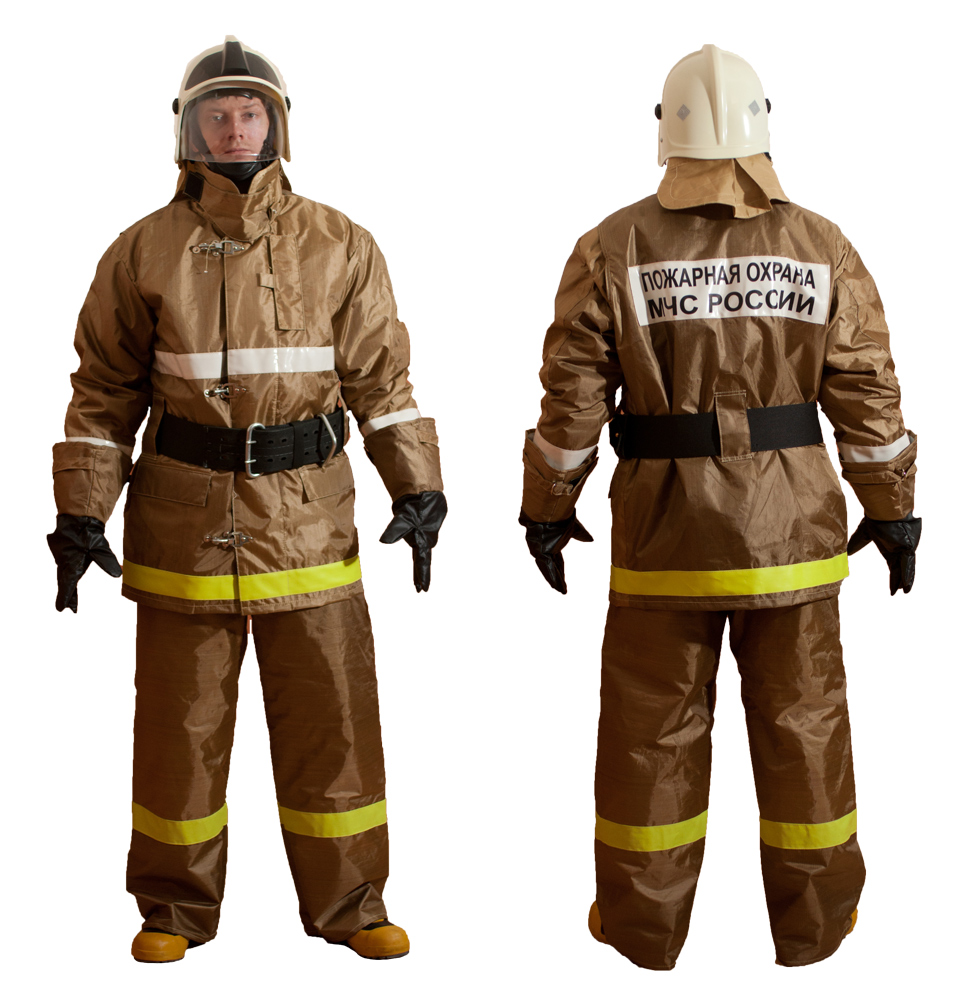
BOP-1 can be used on sea and river vessels, as the kit is certified in accordance with the rules of the Russian Maritime Register.
Combat uniform of the 1st level is worn mainly by gas and smoke defenders - people working in an unbreathable environment, in contact with flames, burning objects. For such clothes, the upper shell is made of materials with aramid fibers, which can withstand ambient temperatures up to 300 ° C for 5 minutes.
The second level kit (BOP-2) is intended for privates and commanders. It protects against high temperatures, but has less resistance to heat than BOP-2. The upper part of the clothing is sewn from impregnated tarpaulin or other more modern material that is not inferior to tarpaulin in properties.
The third level kit (BOP-3) is worn mainly by fire safety inspectors who do not come into direct contact with fire. This kit has the lowest degree of protection. Its top layer is made of artificial leather (vinyl leather).
To protect against radioactive dust and toxic substances, the L-1 suit is used. It withstands a temperature range of -40…+36 °C and is not suitable for extinguishing strong fires. The suit must be used in conjunction with protective respiratory equipment.
Combat kit
Currently, firefighter combat clothing is a multi-layered set. Provided with a durable outer layer, waterproof and heat insulating. Depending on the characteristics of the materials, the layers may coincide, and their number can be reduced to two. So, often modern heat-insulating material performs the functions of water-repellent.
Protective kit includes:
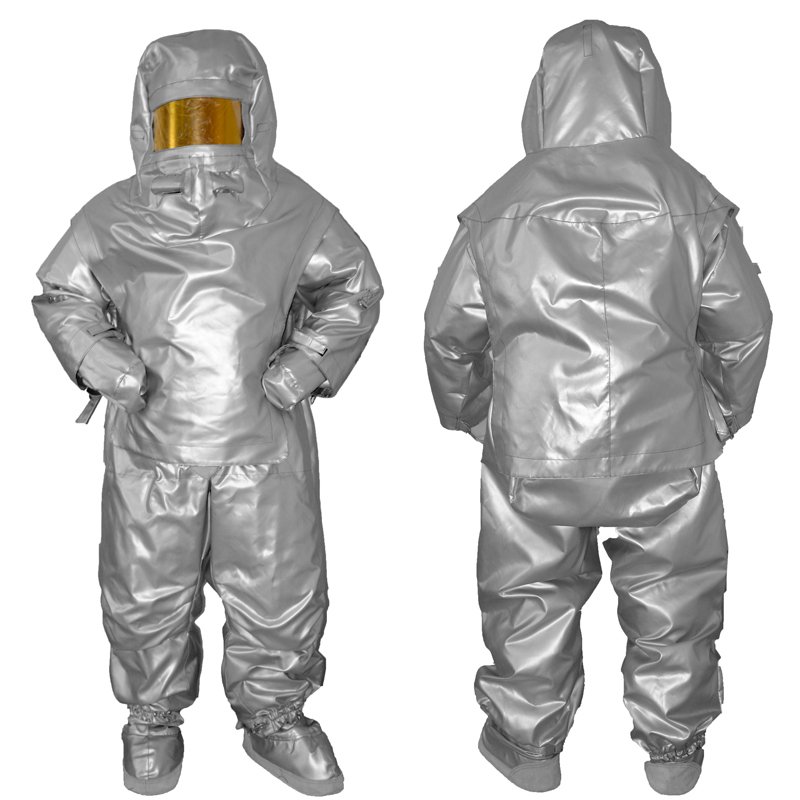
- jacket and trousers with heat-insulating lining;
- collar and vest;
- balaclava;
- Hood;
- signal patches.
Kits can be designed for temperate climates (U) and northern regions with low temperatures (X). In the second case, a fur lining is fastened to the collar and vest, and the vest is made elongated.
The weight of a Y-type kit must not exceed 5 kg, and of an X-type kit - 7 kg. The donning time should be 27 and 30 s, respectively. That is, in half a minute, a firefighter must put on a combat kit and be ready to perform his duties.
The uniform of ordinary firefighters and commanders differs in color, the location of signal elements and the length of the jacket. The manufacturer chooses the choice of colors and location of the patches independently. The boss's jacket is usually made longer.
In addition to combat clothing, special protective clothing (SZO) is distinguished, which has additional protective properties. It protects the eyes, ears, nose, isolates the skin. Together with the SZO, a firefighter can wear heat-resistant underwear made of knitted fabric that absorbs moisture and additionally protects against heat. Thermal underwear is of summer and winter type, consists of a jersey and underpants, can be made in the form of overalls.
Cut, accessories, clothing patches
Clothing should not hamper the movement of a fire service worker. The standard jacket covers trousers by 30 cm or more. Sleeves are made seamless. The fireman's suit is designed in such a way that it can be put on quickly without taking off the shoes.
The jacket is made with a central side fastener, which is closed by a waterproof valve. An obligatory part of clothing are fasteners made of durable heat-resistant plastic or metal alloy. Do not use lacing and loops that can cling to other objects and impede movement.
Any accessories should not come into contact with the lining, so as not to impair its heat-insulating properties.
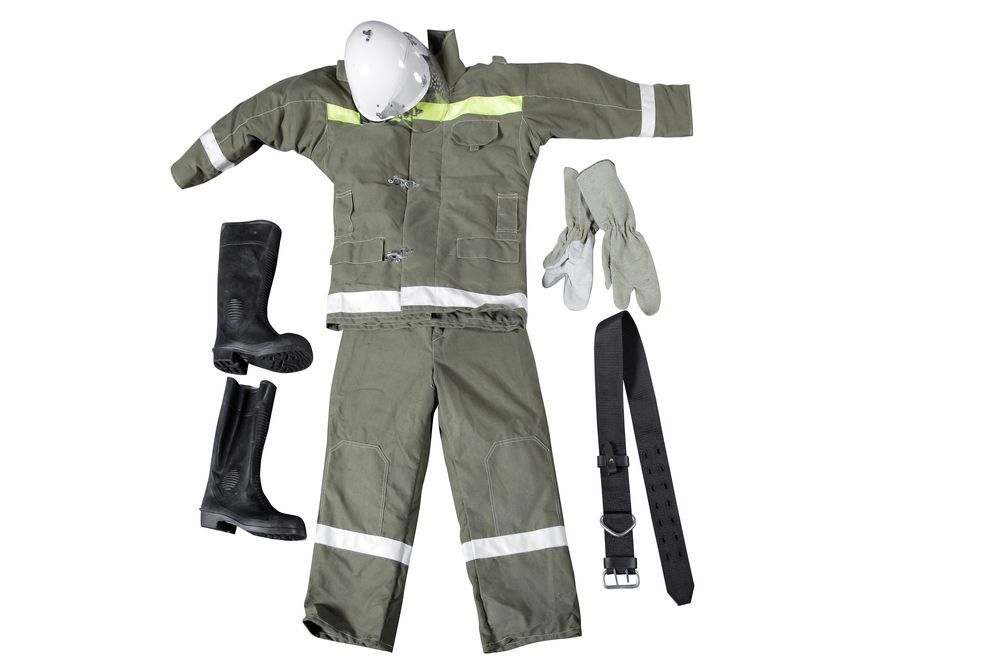
Firefighters often work in conditions of poor visibility, so fluorescent (glow from UV rays) and luminescent patches are provided on clothing. The width of the stripes is 5 cm. On the back there may be an inscription “Fire Guard” or “EMERCOM of Russia” glowing in the reflected rays.
The hood gathers on a ribbon and helps protect the face from fire. You can put it on a helmet. There is also a stand-up collar 10 cm high with an inner lining that is safe for the skin. Additional overlays are made on the back, shoulders, along the bottom edge of the jacket, on the sleeves, trousers.
All pockets on clothing are equipped with holes through which water can drain and fasteners to prevent contents from falling out.
Includes pocket for radio.
To wipe sweat from the face and protect the wrists from injury, the fireman's suit is equipped with wristlets.
combat equipment
Clothing is worn along with combat equipment. An important role in the equipment is played by a life belt, to which a holster is attached for and an ax is put into it. A carabiner is also attached to the belt, with the help of which they save victims from a fire and insure themselves when working at height.
It is possible to be in smoky conditions only by wearing a breathing apparatus that protects the eyes and respiratory organs. Breathing equipment must comply with GOST R 53255-2009. A manual fire escape is used to reach the upper floors.
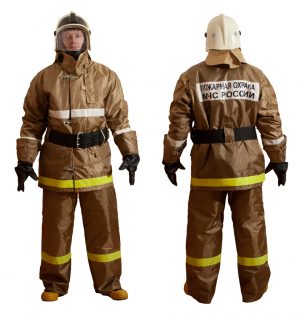
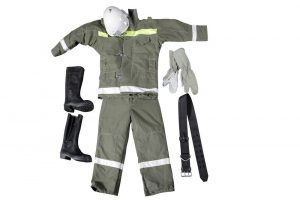
Gloves and shoes are made of rubberized or other non-conductive material. must protect the head from shock and heat. It is made of red, white or black polycarbonate and the visor is made of transparent polycarbonate. The firefighter's personal equipment includes a flashlight, dielectric scissors and a walkie-talkie.
What materials are used
Fire clothing is made from special materials that are resistant to temperatures up to 200 ° C - 400 ° C, chemicals, with an oil and dirt-repellent finish. Apply fabrics from synthetic polyamides. They are durable, non-toxic, non-flammable. The names of Russian and foreign materials are different, but all of them must comply with fire safety standards NPB-157-99.
In addition, GOST R 53264-2009 specifies the requirements for the thermal properties of the material, weight and service life of combat sets of different levels. For stitching, threads made from aramid (Kevlar) fibers are used.
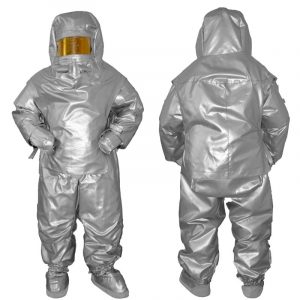
The top layer of clothes of the 1st level is made of light and durable membrane materials that do not allow moisture to penetrate inside. At the same time, the product breathes and lets sweat out. A non-porous (without pores) type of membrane material is used, when vapors are deposited on the inside of the membrane and then diffuse outward.
How to pack and put on a uniform
Firefighters must act quickly and spend a minimum of time getting dressed. For this, the form must be correctly folded and be in a strictly designated place for it.
In the fire station, shelves are allocated, on which the form is folded in a certain sequence. The first is the belt with the buckle up, a holster with an ax and mittens should be fastened to it. Then, according to special rules, a jacket is folded, after it comes trousers, and on top they put a piece with a cape towards themselves. Boots are placed under the shelf with socks away from you so that they can be put forward in one movement and quickly put on.
In order to properly fold the uniform and dress, each future firefighter undergoes training and passes the standards. On command "Alarm! Get your gear on!" he pushes back his helmet, puts on his trousers, then his jacket and belt. Lastly, put on a helmet, not forgetting to tighten the belt under the chin. In emergency cases, the helmet can be fastened in the fire engine. There is a detailed instruction on how to put on firefighter clothing. All movements must be perfectly worked out. This is what training is for.






